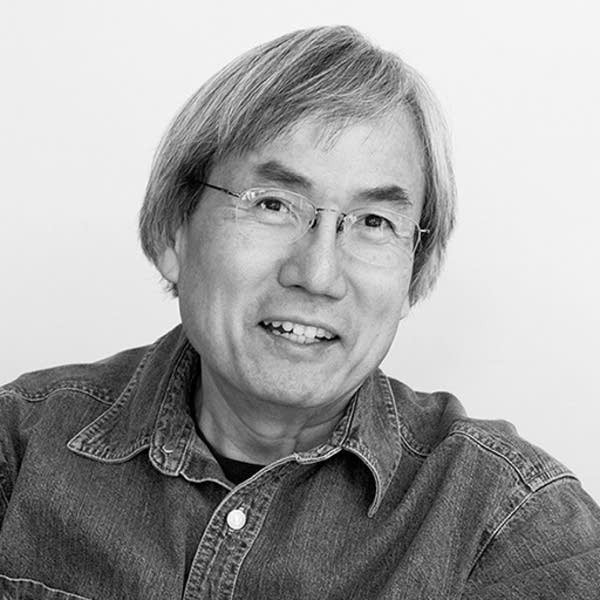In new book, photographer Leo Kim searches for peace in St. Paul
Go Deeper.
Create an account or log in to save stories.
Like this?
Thanks for liking this story! We have added it to a list of your favorite stories.

St. Paul photographer Leo Kim was on a mission to find tranquility within his own city.
He shot the morning fog rolling across the Mississippi River, empty boat slips at Harriet Island, and a full moon over Crosby Farm Regional Park.
The end product is 44 black and white pictures that make up his new photography book, "Saint Paul Serenity."
Some prominent St. Paul residents say Kim has captured a sense of place about the city they love. It's a surprising feat for a man who has spent most of his life looking for a place to call home.
Turn Up Your Support
MPR News helps you turn down the noise and build shared understanding. Turn up your support for this public resource and keep trusted journalism accessible to all.
Kim's family ancestry is Korean, but he was born in Shanghai, China. For the first few years of school there, he was taught by French Catholics.
"I was so confused with different languages -- speaking Korean at home, Chinese in the streets, then it was French," he said.

His family later relocated to the nearby peninsula of Macau, where Kim studied Portuguese. When he was 12, his mom moved the family to British-ruled Hong Kong, where he struggled to learn English.
"English is still little bit difficult for me because I don't have a language, a basic language," said Kim. "So photography has been my language all these years."
Kim's family was constantly on the move out of necessity, not wanderlust. His parents fled North Korea before the Korean War. But after setting in Shanghai, the Communist Revolution uprooted the family again. Kim's mother, by then a widow, and her children escaped mainland China by freight boat in the 1950s.
While en route to Hong Kong, Kim says his mother surprised her children by taking a gamble: She tore up the family's Korean passports and threw them overboard. A woman of faith, Kim said, his mother believed having no papers would better the family's chances of securing political asylum in Hong Kong.
But the plan backfired when authorities in Hong Kong refused to let the undocumented family stay permanently. So, over the next two years, the family traveled between Hong Kong and Macao every 30 days, re-applying for temporary visas.
"We were sort of persona non grata," he said. "We were people of no citizenship, no nationality."
Eventually, he said, authorities in Hong Kong let the family stay as lawful residents.
FINDING PEACE IN ST. PAUL
For the past 26 years, Kim's home has been the Twin Cities. His loft is a converted warehouse overlooking a parking ramp in the artsy-industrial Lowertown neighborhood.
But Kim, 64, says he finds peace here, despite a life's worth of hardships. His father died before he was born, and his mother was killed in a plane crash. In 2006, doctors removed a tumor from Kim's brain. Now, this photographer sees only out of his left eye.
For his book, Kim set his sights mostly on city parks, from the snow-covered urban square of Rice Park, to the raw wilderness of the Bruce Vento Nature Sanctuary, just east of downtown.

Mayor Chris Coleman, a St. Paul native who bought copies for himself and his friends before Christmas, said the book allowed him to see his city in a new light.
"It takes this place and almost makes it mysterious, the shadows and the lighting, and just finding unique angles to the parks and the spaces we have in the city," Coleman. "When I opened that book, I almost had tears in my eyes because it moved me like crazy."
Those pictures took some patience to set up. Kim shot in the early morning or late at night, when no one else was around.
"I really wanted to show the parks, the places, not the people, so the photographs become more timeless," Kim said. "When you have people in there, you can see their clothing, and that can date the photograph."
In the book's foreword, author Louise Erdrich tells readers they "should enter these photographs on tiptoe. Leo has given you the privilege of being the only human in the picture."
MYSTERY OF NORTH DAKOTA
Erdrich met Kim when he was living in North Dakota in the 1970s to study architecture.
How Kim got to North Dakota is a story in itself. He was living in Austria in the 1960s, when he befriended some other foreigners, from Wisconsin. When Kim was looking to apply for colleges, those friends urged him to check out their home state. But when he looked on a map, he became more intrigued by a less-populated patch of the Midwest.
"I was curious," Kim said. "I knew of Minnesota. But North Dakota ... 600,000 people in this huge area, half the size of Germany! Unheard of, for me. So I said, 'I'm going to look into that.'"
Kim traveled around the state, shooting pictures of hay bales and prairies and wheat fields. Those settings became the subject of his first book, "North Dakota Prairie Landscape," which came out in 2003. With that project, he said, he wanted to prove to people the almost infinite sense of freedom one feels under a big sky -- alone.
"It's incredible, the open space," he said. "You can go for a half an hour on the country road, and you don't see anyone."
Kim thinks his pictures of North Dakota and St. Paul say more about himself than of his subjects. They show he's a man at peace, he said, despite life's ups and downs.







